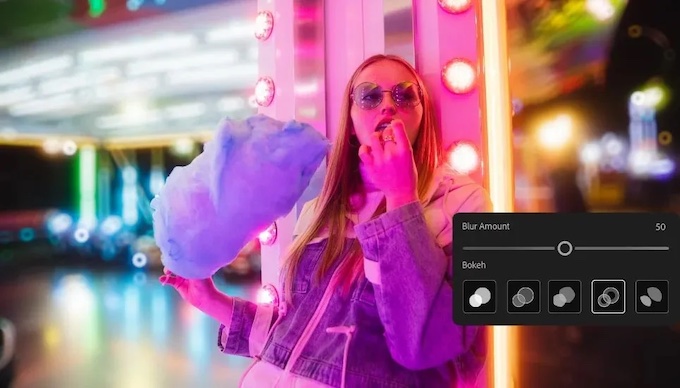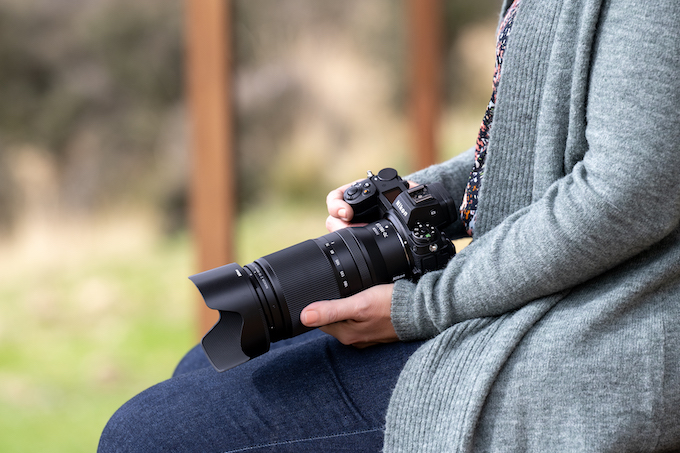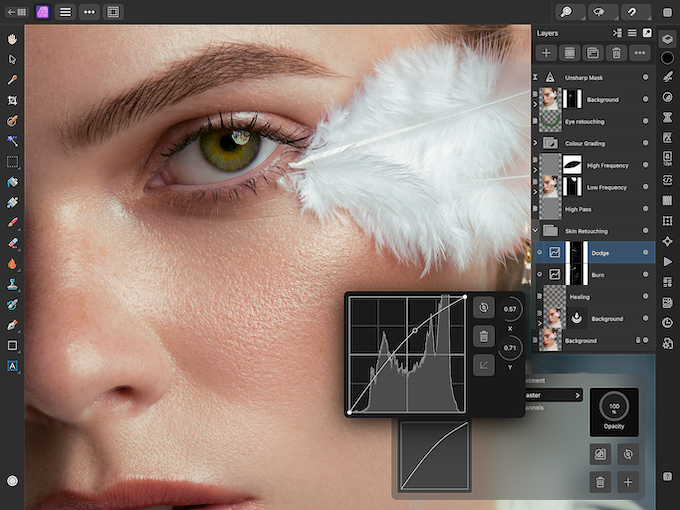Software
Artificial Intelligence (AI) is the latest buzzword in the image enhancement lexicon. Topaz Labs has recently introduced four new software products that have been subjected to from many thousands to reportedly millions of test images and has “taught” the software to produce results that users would want to make workflow more efficient. (For a sense of how you can teach software to learn how to make pleasing images, check out this article from our sister pub.)
The workflow-smart programs are Sharpen AI, DeNoise AI, Gigapixel AI, and JPEG to RAW AI. They are available individually for $80 (DeNoise and Sharpen) or $100 (Gigapixel and JPEG to RAW) or as a bundle for $250. All four function as stand-alone programs while Sharpen and DeNoise also function as plug-ins for Adobe Photoshop, Lightroom Classic, and Topaz Studio.
Read: 16 Software Editing Programs for Every Skill Level
What’s New in Photo Editing
- Sharpen AI is not only able to sharpen image information without sharpening noise, it also has the fairly amazing ability to improve out-of-focus images and reduce shake in hand-held captures.
- DeNoise AI removes image noise while preserving image detail.
- Gigapixel AI is able to increase image resolution by up to 600 percent, realistically.
- JPEG to RAW AI removes compression artifacts, improves details, and enhances dynamic range in JPEG files. The software outputs a DNG file that allows you to apply the full range of RAW file controls to the image rather than the limited controls available to a JPEG file.
In Depth Workflow
Let’s cut to the chase: I found that each of these AI programs pretty much delivered on its promise and performed generally to a higher level than its competitors. Let’s look at them individually.

Original image (cropped) before Sharpen/Stabilize. All photos ©Stan Sholik unless otherwise noted. 
Original image (cropped) after Sharpen/Stabilize

Most sharpening programs simply enhance edge contrast without regard to fine detail. Those programs that deal with fine detail too often sharpen noise, or create haloing and other artifacts. I found that with the careful choice of slider positions in Sharpen AI, you are easily able to sharpen images, including fine detail, without creating artifacts.
But sharpening is only one function of Sharpen AI. The Stabilize sliders allow you to reverse motion blur created when hand-holding at slower shutter speeds, and I found the results truly amazing.
Less amazing was the Focus function, designed to improve focus in images that are soft to begin with. When applied overall to an image there were often artifacts created somewhere. But by carefully composing sharpened areas back into the original it does a great job of making the out-of-focus original seem sharper.

Final image (cropped) after noise reduction. 
Original image (cropped) before noise reduction.

The new DeNoise AI advances the technology in DeNoise 6 and incorporates AI Clear to produce the best noise reduction I have found short of DxO’s PRIME noise reduction found in the Elite edition of DxO PhotoLab 2. With images I tested, up to ISO 25,600, the results were vastly improved with far less detail loss than other competing programs, just not quite to the DxO level.
With the proliferation of higher resolution sensors and AI processing in the latest smartphones, you are less likely to need to enlarge a capture to make a decent print. But if you are thinking about a 16 x 20-inch print or larger, or if you want to reduce the size of the capture, Gigapixel AI might be the solution.

Final image (cropped) after enlargement. 
Original image (cropped) before enlargement.

Topaz takes a different approach to enlargement than the best competitors such as ON1 Photo RAW 2019 and Alien Skin Exposure X4. Topaz Gigapixel AI does more that recover image detail, it actually creates lost detail by analyzing the image and supplying detail it thinks should be there. With natural, random textures such as grass, foliage, stone, and even water, the effect is amazingly believable. However, with faces, buildings and subjects with straight lines, it doesn’t do so well under close inspection. Still, with the right subjects, it can produce some pretty amazing results. And it also works great on reductions up to 600 percent. There is a batch mode for upsizing entire folders of images, too.
We’re assuming you’re all capturing images in RAW format, even with your smartphone (they can do that now). But should you come across a JPEG that needs lots of help, the last member of Topaz’s AI-powered suite, JPEG to RAW AI, is essential. Not only does the program create a DNG file from your JPEG, giving you all the RAW editing options you’re used to, it also improves highlight and shadow detail, removes JPEG artifacts, and enhances dynamic range along the way. The DNG file clearly shows these improvements and having the DNG file permits far greater control over improving the image further.
Pros
With an image that suits the Topaz AI program’s strengths, the resulting output can be very impressive. Even with less than ideal images, with a little composing of the best parts of the Topaz image back into the original, significant improvement is possible. The four programs have a similar look to them and some have an auto button to get you started on the adjustment. The slider adjustments are straightforward and an adjustable vertical divider allows you to compare before and after views before committing to a final output.
Cons
As long as you keep away from the extremes of the sliders you won’t run into too much trouble with artifacts or strange behavior. But the major negative with each of the AI programs is processing speed.
My Windows and Mac machines at home aren’t the latest models and it took a full 7.5 minutes to perform a focus adjustment to a 24-megapixel file! Even at the studio on the latest iMac, time moved slowly waiting for the processing to complete on a full res image. And unless you turn off Automatically Update Preview, there is a significant wait while the program processes a new area of the image if you pan across.
Read: Ten Great Photo Retouching Tips
Bottom Line
Both Topaz Sharpen AI and DeNoise AI are major improvements on most competitive offerings and deserve to be in every photographer’s toolbox. And since their combined cost is within $50 of the cost of the entire bundle, there is no reason to not have the other two “just in case”. If you own the bundle, the recommended order of use is: JPEG to RAW AI, Sharpen AI, DeNoise AI and finally, Gigapixel AI.
Stan Sholik is a highly experienced commercial/advertising still life photographer out of San Clemente, California. He is also a prolific writer on conventional and digital imaging topics with articles in View Camera, Shutterbug, Professional Photographer, Rangefinder and more. Amherst Media, Inc. has published six books that he has authored or co-authored, including: Close-up and Macro Photography Handbook, Photographic Filter Handbook, Handbook of Digital SLRs and Professional Filter Techniques for Digital Photographers. He also has a book released by Wiley Publishing on Nik Software’s HDR Efex Pro.
Don’t Miss: Why AI Could Change How We Think About Image File Sizes
Reviewed: Photo Mechanic 6, Is It Worth It?





